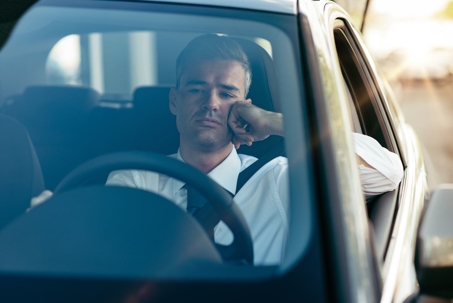Over the past decade, distracted driving has grown from a little-recognized phenomenon to a massive road-safety movement. With growing temptation to look at cellphones, every driver must understand the three types of driving distractions and how they creep into our thoughts. To understand the truth about distracted driving, we need to break down the concept and then build it back up.
The Dangers of Distracted Driving
How bad is distracted driving, you ask? Experts estimate that 25% of all US car crashes are caused by distracted driving. That’s nearly the same number of crashes as DUIs. Between DUIs and Distracted Driving, that’s a whopping 3,000,000 car crashes per year.
As you can see, distracted driving is an epidemic, but it doesn’t have to be. When we understand what causes these distractions, we can prevent ourselves from falling victim to their allure.
Three Types of Distracted Driving
Most experts, including the CDC, agree that distracted driving isn’t just sipping coffee or looking at your phone while driving. Rather, each driving distraction is made of a combination of three elements.
The three types of driving distractions are:
Visual Distraction: Takes your eyes off the road.
Manual Distraction: Takes your hands off the steering wheel.
Cognitive Distraction: Takes your mind away from the present moment.
Each of these distractions are a hazard on their own. If you look away, you might not notice flashing brake lights. If you reach for your drink, you might be unprepared to swerve away from an incoming crash. Worst of all, if you start daydreaming, you might lose all sense of your surroundings.
Cognitive Distractions and You
If you aren’t sure about cognitive distractions, you’re not alone. Studies suggest cognitive distractions are responsible for more than half of all distracted driving accidents. But what does that mean? What are cognitive distractions?
If you’ve ever driven home after a long day at work and found yourself thinking about the workday or what you’ll have for dinner, that’s a cognitive distraction. If you ever find yourself having arguments in your head or singing along to your favorite song, that’s a cognitive distraction.
Driving becomes so routine for us that we lose can lose our sense of self-awareness. If you’ve ever gotten in the car, started daydreaming, and then found yourself pulling into your parking spot, you’re not alone. It means that you fell for a serious cognitive distraction. If anything disrupted you from this distraction, like a car unexpectedly backing up or slamming on the brakes, you wouldn’t be prepared to act.
That’s what makes cognitive lapses the most dangerous type of driving distraction. When we take our eyes off the road or our hands off the wheel, we know we’ll put them back in a moment. When we start daydreaming, we lose sight of the task at hand and need to put in concentrated effort to recognize the distraction and snap out of it.
Triple Threats - The Worst Driving Distraction
While cognitive distractions are the most dangerous type of driving distraction, they are not the worst distraction overall. That title is reserved for the “triple threats,” actions that use all three types of driving distractions.
A few examples of triple threats include: Reaching around for a lost item or a bag, eating while driving, and, of course, using your cellphone. While cognitive distractions are dangerous on their own, triple threats are extremely risky.
A daydreaming driver is on autopilot, but they can be snapped out of it just before a crash, giving them time to swerve or slam the brakes and reduce the amount of damage. A driver indulging in a triple threat distraction is unlikely to recognize an imminent crash at all, much less be prepared to do something about it. That’s why crashes involving cellphones tend to be more severe, because the distracted driver didn’t realize a crash was imminent, so they didn’t slow down or brace themselves for impact.
Preventing triple threat distractions starts by recognizing our own weaknesses. Next time you’re behind the wheel, make a conscious effort to focus on the road, and recognize potential distractions like billboards and cellphones. The more we recognize these distractions, the better equipped we are to prevent these tragic accidents
If you or someone you love suffered serious injuries in a distracted driving accident, we are here for you. If you’d like an experienced Modesto car accident lawyer from Law Offices of Dean Petrulakis to evaluate your case, please send us an email or call (209) 528-0404.

